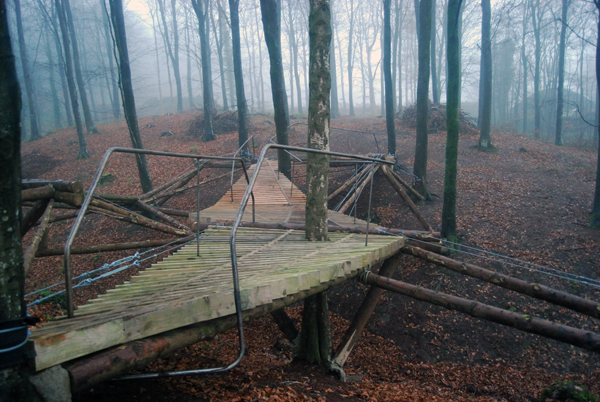
Crossings
Crossings is like an oversized stick insect creeping through the forest in Dorset’s Hooke Park. The pedestrian bridge is a network of untreated round timbers, footed at the bases of surrounding beech trees, and steel rope, slung around the same large beeches. Positioned in a picturesque spot in the 350 acre working woodland, the 19m bridge, which spans a 4m-deep valley, replaces a dilapidated suspension bridge and provides a new link to the public bridleway located nearby.
Crossings was constructed by a team of AA students and tutors, along with some local help, who worked during holidays over two years, with advice from Swiss engineer Jürg Conzett. Initially conceived as a minimal impact ‘spider web’ rope bridge tied to the nearby trees, the rope was replaced by 41 norway spruce poles for structural rigidity and in keeping with Hooke Park’s tradition of seeking new uses for the ‘thinnings’, which are cut as part of a forest maintenance cycle to allow select trees to thrive. The final geometry of the structure was determined by the locations of the twelve existing large beech trees.
The footings for the spruce poles, as well as the floating junctions between them, are concrete, poured on site into formwork made of clay that was dug below the bridge. High tension steel rope holds all the members in compression and lends structural rigidity. Grooves are cut into special timber pieces that help locate the rope and protect the spruce poles from rubbing. The rubber that protects the beech trees from the cable was salvages from a nearby tire yard. The walking surface is panels of decking, douglas fir slotted using the CNC machine in the Hooke Park workshop. The mild steel balustrade was the final element to be completed.
The 2006 AV Custerson award winning project was exhibited at the Building Center, London, in 2008 and at the Architectural Association in 2007.
